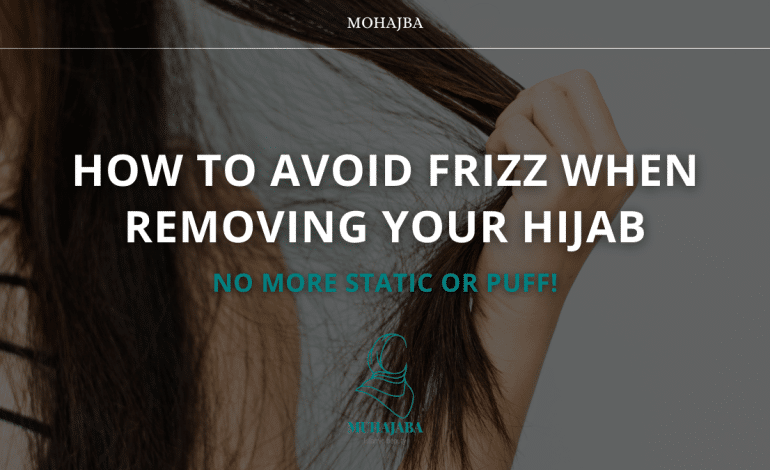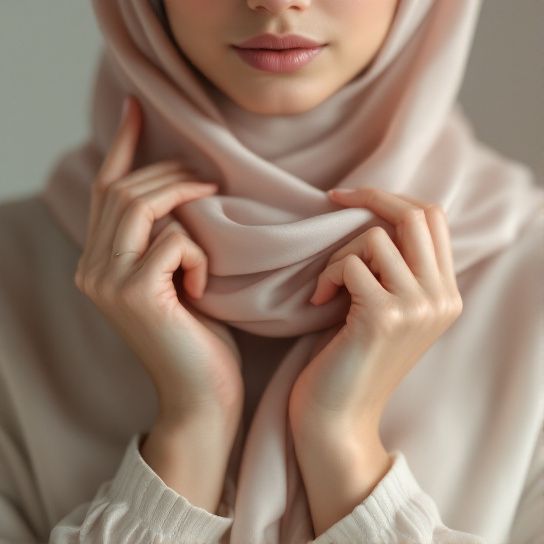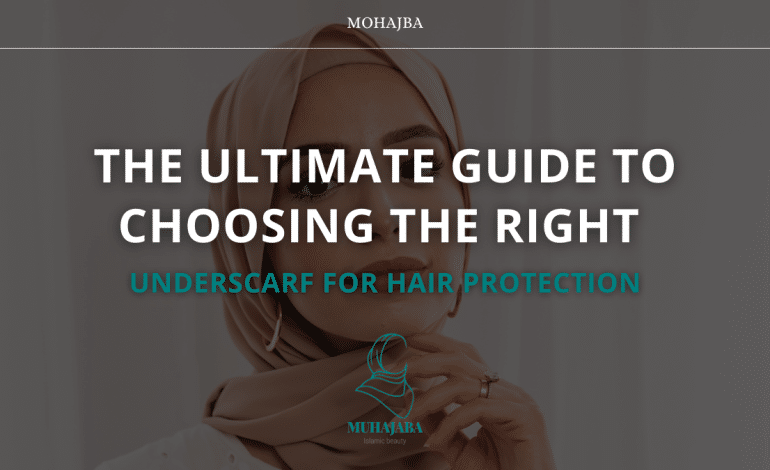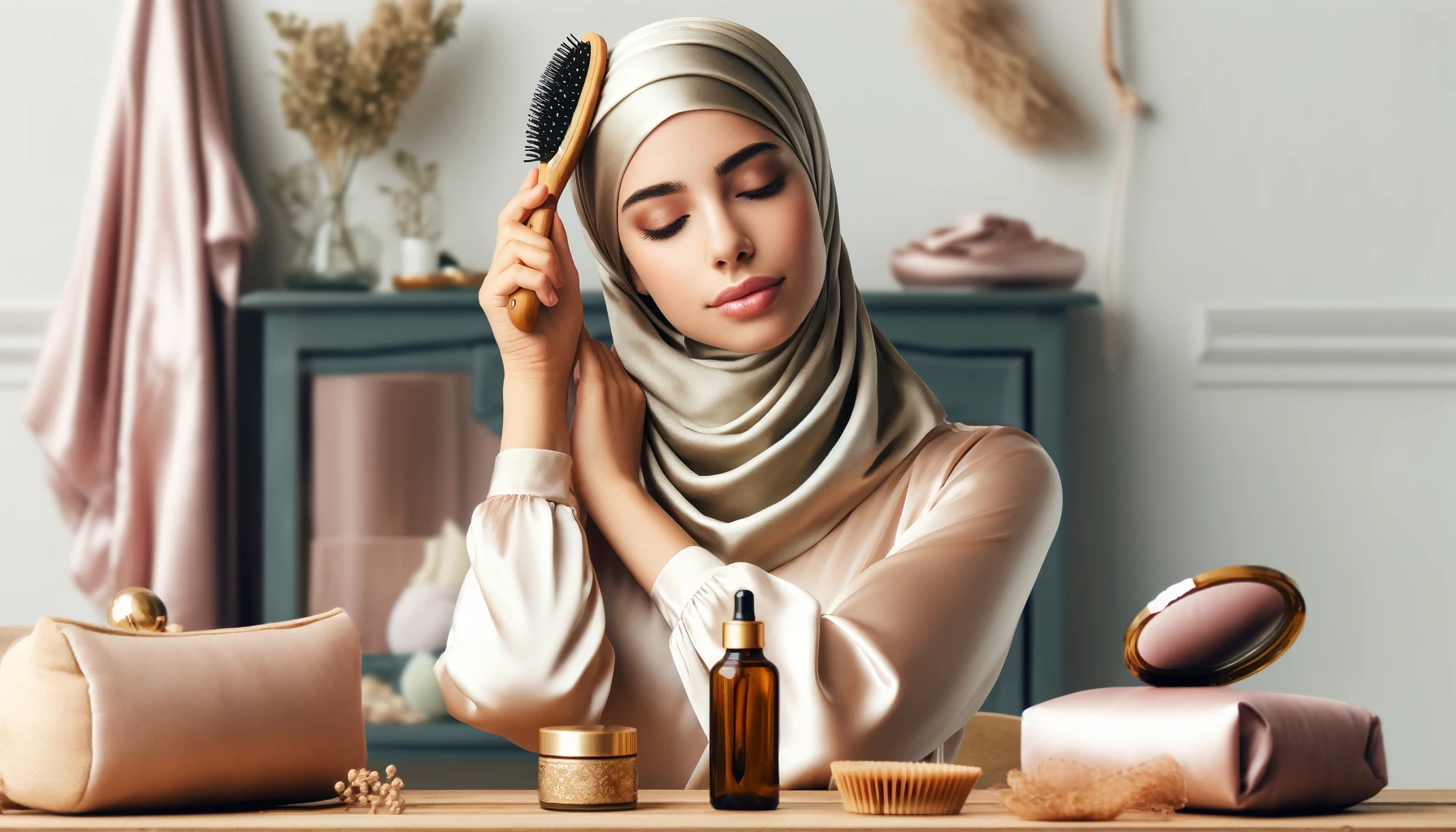How to Avoid Frizz When Removing Your Hijab – No More Static or Puff!

You take off your hijab after a long day — and boom!
Frizz. Puffiness. Flyaways.
Sound familiar?
Whether you have straight, wavy, or curly hair, frizz after removing your hijab is a common struggle. The good news? It’s not permanent — and it’s totally preventable.
This guide is here to help you understand why frizz happens under the hijab and how you can keep your hair looking sleek, defined, and healthy when the scarf comes off.
💨 Why Does Hair Get Frizzy After Wearing the Hijab?
Frizz is caused by one main thing: moisture imbalance. When your hair lacks hydration, the strands search for moisture from the air — which causes them to swell and puff up.
Now add:
- Friction from underscarves
- Sweat and heat buildup under layers
- Dry fabric rubbing against dry hair
…and you’ve got the perfect frizz storm.
🧕 7 Easy Ways to Prevent Frizz When Taking Off Your Hijab
✅ 1. Use Silk or Satin-Lined Underscarves
Cotton and polyester fabrics can dry out your strands and cause friction. Silk or satin-lined caps are smooth, reduce static, and help retain moisture in your hair.
💡 Bonus: They also help preserve curls and sleek blowouts.
✅ 2. Moisturize Before You Cover
Hydrated hair = frizz-free hair. Apply a leave-in conditioner, curl cream, or hair serum before styling or putting on your scarf.
💡 Focus on the ends and hairline — these areas are most prone to frizz and dryness.
✅ 3. Avoid Tying Hair Too Tight
Tight buns stretch and stress your strands. Go for a loose braid or low ponytail to reduce tension and friction throughout the day.
✅ 4. Let Your Hair Dry Fully Before Covering
Covering damp hair can trap heat and steam, disrupting your hair’s cuticle and leading to puffiness.
💡 Dry your hair with a microfiber towel or cotton T-shirt — regular towels cause friction and frizz.
✅ 5. Switch to Anti-Frizz Hair Products
Use a gentle, sulfate-free shampoo, hydrating mask once a week, and anti-frizz serum or oil. Look for products with:
- Argan oil
- Shea butter
- Glycerin
- Aloe vera
✅ 6. Let Hair Breathe Daily
Even 30 minutes of “hair freedom” helps. When you’re home, take off your scarf and fluff out your hair with your fingers to stimulate blood flow and reduce tightness.
✅ 7. Sleep on a Satin Pillowcase
If you shower at night or wear your hijab early in the morning, a satin pillowcase helps reduce overnight frizz — especially for curly-haired hijabis.
❓ Frequently Asked Questions
Q1: Does frizz mean my hair is damaged?
A: Not always. Frizz is usually a sign of dryness or friction. With the right care and moisture, you can reverse it easily.
Q2: Can I use oils to fight frizz?
A: Absolutely. Lightweight oils like argan, jojoba, or grapeseed oil smooth the cuticle and help lock in moisture without making your hair greasy.
Q3: My hair gets frizzy no matter what — what else can I do?
A: Review your underscarf fabric, avoid over-washing your hair, and consider using a hydrating hair mask weekly. Frizz is manageable with consistency.
✨ Final Thoughts
Frizz doesn’t have to be part of your post-hijab routine. With the right fabric, hydration, and protective habits, you can keep your strands sleek and healthy — even after hours of wear.
Your hair can stay smooth, defined, and stress-free… just like you.
📲 Stay Connected
Ready for more hijabi hair care secrets?
👉 Follow us on social media for styling hacks, real-life routines, and product tips
👉 Check out www.mohajba.com for the best in hijab-friendly beauty, scalp care, and natural hair support






